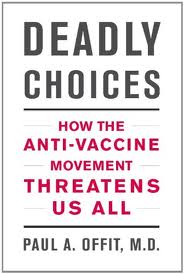February 8th, 2011 by Harriet Hall, M.D. in Better Health Network, Research
No Comments »

Ear infections used to be a devastating problem. In 1932, acute otitis media (AOM) and its suppurative complications accounted for 27 percent of all pediatric admissions to Bellevue Hospital. Since the introduction of antibiotics, it has become a much less serious problem. For decades it was taken for granted that all children with AOM should be given antibiotics, not only to treat the disease itself but to prevent complications like mastoiditis and meningitis.
In the 1980s, that consensus began to change. We realized that as many as 80 percent of uncomplicated ear infections resolve without treatment in three days. Many infections are caused by viruses that don’t respond to antibiotics. Overuse of antibiotics leads to the emergence of resistant strains of bacteria. Antibiotics cause side effects. A new strategy of watchful waiting was developed.
Current Medical Guidelines
In 2004, the American Academy of Pediatrics (AAP) and the American Academy of Family Physicians (AAFP) collaborated to issue evidence-based guidelines based on a review of the published evidence. Something was lost in the transmission: The guidelines have been over-simplified and misrepresented, so it’s useful to look at what they actually said. There were six parts:
1. Criteria were specified for accurate diagnosis.
- History of acute onset of signs and symptoms
- Presence of middle ear effusion (ear drum bulging, lack of mobility, air-fluid level)
- Signs and symptoms of middle ear inflammation: Either red ear drum or ear pain interfering with normal activity or sleep
They stressed that AOM must be distinguished from otitis media with effusion (OME). OME is more common, occurs with the common cold, can be a precursor or a consequence of AOM, and is not an indication for antibiotic treatment. Read more »
*This blog post was originally published at Science-Based Medicine*
February 8th, 2011 by RyanDuBosar in Better Health Network, Research
No Comments »

Physicians see nearly one in five patients as “difficult,” report researchers. Not surprisingly, these patients don’t fare as well as others after visiting their doctor.
Researchers took into account both patient and clinician factors associated with being considered “difficult,” as well as assessing the impact on patient health outcomes. They reported results in the Journal of General Internal Medicine.
Researchers assessed 750 adults prior to their visit to a primary care walk-in clinic for symptoms, expectations, and general health; for how they functioned physically, socially and emotionally; and whether they had mental disorders. Immediately after their visit, participants were asked about their satisfaction with the encounter, any unmet expectations, and their levels of trust in their doctor. Two weeks later, researchers checked symptoms again.
Also, clinicians were asked to rate how difficult the encounter was after each visit. Nearly 18 percent were “difficult.” They had more symptoms, worse functional status, used the clinic more frequently and were more likely to have an underlying psychiatric disorder than non-difficult patients. These patients were less satisfied, trusted their physicians less, and had a greater number of unmet expectations. Two weeks later, they were also more likely to experience worsening of their symptoms.
But the label works both ways, as physicians with a more open communication style and those with more experience reported fewer difficult encounters, researchers said.
On a lighter note, TV’s comedy “Seinfeld” dedicated an entire plotline from one of its many episodes to Elaine, her doctor, and the label of being a difficult patient. It’s worth watching here.
*This blog post was originally published at ACP Internist*
February 7th, 2011 by Toni Brayer, M.D. in Health Tips, News
No Comments »

 The Canadian Medical Association Journal (CMAJ) has published a new primer designed to help physicians when they counsel pregnant women. They note that sex during pregnancy is normal and is generally considered safe. The authors point out that there are very few proven contraindications and risks regarding intercourse in normal pregnancy.
The Canadian Medical Association Journal (CMAJ) has published a new primer designed to help physicians when they counsel pregnant women. They note that sex during pregnancy is normal and is generally considered safe. The authors point out that there are very few proven contraindications and risks regarding intercourse in normal pregnancy.
Pregnant women and their partners are often afraid to have sex. Men may think they are “invading” the home of the fetus and could actually harm the baby. In fact, the fetus is quite safe, ensconced in the uterus (womb) and the cervix (opening of the uterus) is closed in normal pregnancy. The penis has no contact with the fetus or the uterus during normal intercourse, no matter what the position.
When is intercourse considered risky? Only for women who are at high risk for preterm labor and for those with placenta previa because there is increased risk for hemorrhage. Even women who have had preterm labor may safely have sex unless they have cervical incompetence or a lower genital tract infection.
Women who are under the care of an obstetrician should know if they have any of these risks. The vast majority of women should be reassured that sex during pregnancy is safe for mom and baby.
*This blog post was originally published at EverythingHealth*
February 1st, 2011 by DrWes in Better Health Network, Opinion
No Comments »

 It came as a Twitter “follow” from @coldfeet65, a self-proclaimed “Nurse Practitioner Hospitalist.” I had never heard this term before. Does it mean a nurse practitioner who cares for hospitalists? Or is it a hospitalist who is a nurse practitioner? Or maybe it’s a nurse practitioner who helps hospitalists? (Honestly, I think I know which one she means, but you get my point.)
It came as a Twitter “follow” from @coldfeet65, a self-proclaimed “Nurse Practitioner Hospitalist.” I had never heard this term before. Does it mean a nurse practitioner who cares for hospitalists? Or is it a hospitalist who is a nurse practitioner? Or maybe it’s a nurse practitioner who helps hospitalists? (Honestly, I think I know which one she means, but you get my point.)
Perhaps this is a prescient glimpse to healthcare of the future, where our more typical nurse and doctor labels are supplanted by more and more monikers that serve to confuse, rather than clarify, each of our roles in healthcare delivery. As specialists in cardiology, we’ve seen a similar trend with cardiology hospitalists. But we should be clear what this means to the patients and doctors going forward.
No doubt most people in America still expect to see a doctor when they come to the hospital. Increasingly, it appears that might not be the case. Your doctor might be a robot while a nurse (aka, nurse practitioner) will be the one providing the hands-on care in the inpatient setting. Is that a good thing? Honestly, I’m not sure.
No one argues that the costs in healthcare need to be cut. No doubt the central authority has deemed that doctor salaries will be a big part of that effort. Already, 20 states have cut physician Medicaid payments for fiscal year 2010 and, given the current economic pressure on our states both now and after they start feeling the financial impact of the “Affordable” Care Act in 2019, this trend is not likely to improve anytime soon. As a result, we are seeing that the world is full of “creative solutions” to our healthcare access crisis and the evolution to “nurse practitioner hospitalists” might be one of these. Read more »
*This blog post was originally published at Dr. Wes*
January 31st, 2011 by Bryan Vartabedian, M.D. in Book Reviews, Opinion
No Comments »

 A friend suggested she was tired of hearing about vaccines. Her comment and our subsequent conversation seemed to reflect an important shift in parent sentiment: The conversation about vaccines is beginning to get somewhere.
A friend suggested she was tired of hearing about vaccines. Her comment and our subsequent conversation seemed to reflect an important shift in parent sentiment: The conversation about vaccines is beginning to get somewhere.
While much of this was born of the mainstream media’s newfound realization that the vaccine-autism connection was cooked, some of this is due to the tireless work of those like the Children’s Hospital of Philedelphia’s Dr. Paul Offit who get the story right.
As part of his passionate agenda to expose vaccine truths, he’s published “Deadly Choices: How the Anti-vaccine Movement Threatens Us All” (Basic Books, 2011). For those looking to understand the origins of anti-vaccine sentiment, read this book.
What struck me is the deep history behind the anti-vaccine movement. From Jenner’s smallpox fix to modern-day MMR struggles, Offit draws fascinating corollaries surrounding immunization that seem to defy the generations. Vaccine resistance was not born of Andrew Wakefield, but broader concerns rooted in religion, individual liberty, fear and propaganda. “Deadly Choices” puts the anti-vaccine movement in a historic sequence that reads like good suspense. I couldn’t put it down. Read more »
*This blog post was originally published at 33 Charts*
















